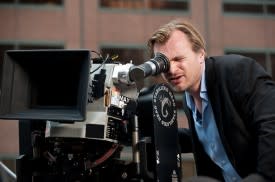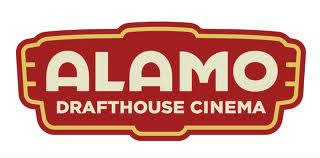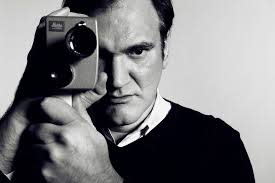Alamo Drafthouse’s Tim League: Make A Place For Christopher Nolan, Quentin Tarantino, And Film Stock In Digital Future
Tim League is the CEO of Alamo Drafthouse, and the co-founder of Fantastic Fest, now the largest genre gathering in the U.S. While he is part of the new breed of theatrical exhibitors, he weighs in with a surprisingly retro opinion on the major theater owner’s dilemma of whether to fully commit to digital, even though great filmmakers like Christopher Nolan and Quentin Tarantino are committed to taking the film print off the endangered species list.

I read a recent article regarding cinema owners up in arms over the decision by Paramount and Christopher Nolan to make Interstellar available to film-capable theaters two days early.
As the guys who have invested in the brick and mortar, it is right that we watch our costs and protect our interests, but is it really a smart thing to ignore it when Nolan and other filmmakers who play on his level ask us for something important?
I ask all cinema owners, what is our relationship to filmmakers? I consider myself a venue in service of the creative visionaries who create the stories and experiences for which we charge. If Christopher Nolan prefers for his movie to be projected from 35mm or 70mm prints, then we as an industry should respect his vision and do our best to support it. He is seeing an industry that has all but abandoned the rich history and tradition of film projection and is using this highly anticipated release to stop the rapid erosion of film projection in cinemas.
I understand and approve of the conversion to digital. 35mm prints are easily damaged. Green lines that are carved into the film from bad film handling or dirty equipment are permanent and will diminish the experience for every subsequent audience. Striking a new film print is expensive, about $2000 a pop. Skilled projectionists are rare and training staff to properly project film is time-consuming. Skilled film projection is an art form.

With digital presentation, the movie looks as good at the first screening as it does after playing for months. The projectors can have automated starts so you don’t even have to have a projectionist in the booth. And making an additional copy is as easy as copying a file to a USB hard drive or transmitting it via satellite. The conversion to digital was an effort to increase the quality and consistency of presentation, but more importantly it was a means for the studios to save costs.
Exhibitors in turn have largely shouldered the heavy cost of digital conversion, anywhere from $100,000 to $150,000 per screen. I share that pain. The conversion was very expensive and independents in particular got a raw deal (many missed out on the financing deals made available only to the large exhibitors). That said, how much more would it have cost to preserve a couple of 35mm projectors and have auditoriums that can project both formats? Usually, pennies on the dollar—a new port glass window and maybe an additional power drop.
We have long since converted to Sony 4K Digital at Alamo Drafthouse, but in half or more of our 19 locations, we maintain and frequently use our 35mm projectors. Of the approximately 40,000 screens in the US, less than 400 are showing Interstellar on film. This speaks to a tiny fraction of total number of screens in America still having the ability to project film. During the conversion to digital, most exhibitors made a conscious decision to turn their back on 35mm projection forever.

In an age where everyone is scrambling for the elusive alternative content dollar, it appears that the vast majority of cinemas have discarded a simple key that was right under our noses. Of the tens of thousands of films ever produced since the advent of cinema, only about 1% are available on DCP (the standard format for digital cinema files). If you want to properly project a classic film that isn’t one of the top hundred or two recognizable titles, you must project on 35mm. At our equipped cinemas in the Alamo Drafthouse chain, 35mm still accounts for anywhere from 1 percent to 7 percent of our total box office revenue depending on the venue. Five-percent alternative content is a stretch goal for TOTAL alternative content for most cinemas; we reached that in some locations simply by not throwing out our 35mm projectors.
In our Yonkers location, which has been open a little more than a year, we installed changeover 35mm in our big house. In less than six months, 35mm revenues paid off the initial investment of approximately $25,000. Preserving the art of 35mm projection isn’t just nostalgic, it makes financial and practical sense.

There is something to be said for the dismay Quentin Tarantino expressed on the shores of Cannes this year:
“As far as I’m concerned, digital projection is the death of cinema,” he said. “The fact that most films aren’t presented in 35mm means that the world is lost. Digital projection is just television in cinema.” While I don’t agree with this sentiment, I do share his dismay in the rapid loss of 35mm in the cinema industry.
For those re-installing 35mm for Christopher Nolan’s Interstellar, you can bet that when Tarantino’s Hateful Eight hits screens next year, he’ll follow a similar if not more aggressive release plan on 35mm. And Nolan and Tarantino are not alone. I expect and hope that there will be other opportunities to recoup the investment of 35mm in the years to come.
I understand the sentiments of Foothills Cinemas president and CEO Byron Berkley, who said, “it makes no sense to step back in time” in reference to screening films on 35mm. However, I strongly disagree.
Our mission as cinema owners should be to build a young cinephile audience. Yes, we make most of our box office from Guardians of the Galaxy and The Hunger Games just like most everyone else, but it is important for every exhibitor to view cinemas as cultural centers.
We should be finding ways to inspire a young generation to fall in love with going to the cinema just like Tarantino, Nolan and many of us theater owners did when we were kids. I want a younger generation to love classic films, to appreciate the shared experience, and to have a passion for film history. The only way we can do that is to ensure that 35mm never dies. I enthusiastically “step back in time” at the cinema and encourage everyone else to do the same.
Related stories
Christopher Nolan Handing American Cinematheque Award To Matthew McConaughey
Eli Roth Launches Vine Talent Search, Will Develop Original Idea With Winner
Quentin Tarantino's New Beverly Slammed By Longtime Employee – Pulp Friction?
Get more from Deadline.com: Follow us on Twitter, Facebook, Newsletter
